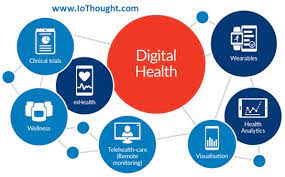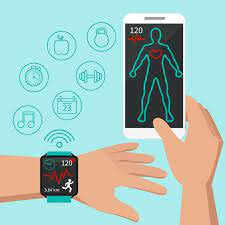Part 2: Tips to planning for IoMT adoption
If you read Part I, you know what the Internet of Medical Things (IoMT) represents. If you’re still catching up, IoMT is the blanket term for connected medical devices that feed medical or patient data into a cloud-based storage system – from wearable technologies that can track health fluctuations, to smart pill bottles that can paint a picture of compliance or let a doctor know when a prescription needs to be filled.
Time savers. And potentially lifesavers. At the heart of this inevitable digital transformation is the desire to improve patient care. All physicians can get behind that notion, but the idea of implementing connectable technology into a daily routine can be intimidating and intense. The technology exists in everything from asthma inhalers to thermometers and blood pressure cuffs, but physicians and other medical professionals have to learn what these devices are and how they can be used safely and effectively.
When deciding how you might implement these technologies into your practice, begin by focusing on the back end – infrastructure is everything. Network bandwidth issues are primary needs that should be assessed before you try to apply any of these tools. Technology changes rapidly and keeping up can be an ongoing challenge.
 Interoperability and standardization pose additional challenges. Until there is guidance at the provincial level, where Electronic Health Records can already pose difficulties across borders, selecting which devices to use will be a research-based initiative at the individual level. As these devices become more widely used, manufacturers and regulators will have to find ways to ensure that devices can communicate easily and securely across a wide range of platforms. And documentation will be key to ensuring proper usage, who has access, as well as in assessing devices effectiveness and efficacy.
Interoperability and standardization pose additional challenges. Until there is guidance at the provincial level, where Electronic Health Records can already pose difficulties across borders, selecting which devices to use will be a research-based initiative at the individual level. As these devices become more widely used, manufacturers and regulators will have to find ways to ensure that devices can communicate easily and securely across a wide range of platforms. And documentation will be key to ensuring proper usage, who has access, as well as in assessing devices effectiveness and efficacy.
Regulatory impact is another consideration. You will need a clear understanding of who owns the data – the device manufacturer, the health care provider or the patient. Guidance comes straight from The Privacy Act and PIPEDA when questions arise about privacy. Clear risk-based data privacy policies must be defined, with regular audits performed, to ensure the data is safeguarded.
The largest concern, however, is security and patient privacy. With devices themselves moving outside of the clinic, users’ data will be bouncing across networks from the local coffee shop, to malls and grocery stores, to home offices. Before bringing devices into your existing network, you need to establish a security-focused assessment for adding new equipment for a safe addition. Rules must be built around data, with an awareness of auditable and traceable models that ensure data monitoring and tracking to protect it all from cybersecurity risks, as well as documenting all this information.
Building a business plan for IoMT is much the same as the one you established for your clinic, and can be boiled down to a handful of best practices – with the digital transition top of mind in this case:
- Learn the basics: Start by expanding your knowledge about potential IoMT building blocks. Whatever solutions you consider, you need to know enough to ask the right questions about the flow of data from start to finish. How is the data captured and where is it stored? Who touches it and why? How is the data transformed during the process and what protocols are used – are they proprietary or do they need to be standardized?
2. Fix any gaps in your foundation: As IoMT evolves, challenges will always be there regardless of what solutions emerge. These include security, integration, data management (collect, transform, and store), as well as analytics. As you plan an IoMT project strategy, identify gaps in your infrastructure, core skills, tools and resources. Build a plan to address these challenges before you implement your first IoMT projects.
3. Experiment, learn, and adapt: In the early stage, there are no right answers, no winning business models, and currently no best practices to follow. Use what you conclude is the safest and most reliable (and useful) IoMT products to experiment with and learn crucial lessons. Accept limitations. Learn from those experiences. Adapt the lessons learned and repeat. Start small and add IoMT pilots to existing practices rather than over-investing and over-committing and trying to come up with projects from scratch. Scale up over time.
4. Prioritize IoMT pilot projects: It can be tempting to treat these IoMT pilot projects the same way you would treat more established solutions, focusing on things like ROI and cost. But that will lead to a list of priorities with IoMT at the bottom. Instead, make an IoMT pilot an explicit priority so you can lay the critical groundwork for future success. Remember, with early IoT projects, your main goal is to learn, experiment and uncover challenges. Consider projects based on scalability, impact, and interoperability.
5. Document. As with any experiment, the ability to go back over the processes and procedures is critical to being able to assess what works and what does not. If the documentation part feels onerous, consider a medical transcription service. Focus on using a Canadian firm, and ensure they meet all federal and provincial privacy legislation.
Taking your medical transcription into the future with secure transcription services is a technological advancement no one saw coming as the digital age of health care began. Adding new tools at the front end of the IoMT movement could be equally as beneficial to you.
Ascribe Inc. is a medical transcription services agency located in Toronto, Ontario Canada, providing medical transcription services to physicians, clinics and other healthcare providers across Canada. Our medical transcriptionists take pride in the quality of your transcribed documents. WEBscribe is our client interface portal for document management. 2Ascribe continues to implement and develop technology to assist and improve the transcription process for physicians and other healthcare providers, and recently introduced AUTOfax. AUTOfax works within WEBscribe to automatically send faxes to referring physicians when a document is signed off by the healthcare professional. As a service to our clients and the healthcare industry, 2Ascribe offers articles of interest to physicians and other healthcare professionals, medical transcriptionists and office staff, as well as of general interest. Additional articles may be found at http://www.2ascribe.com.
PANDEMIC EFFECTS: Welcome to the digital revolution

